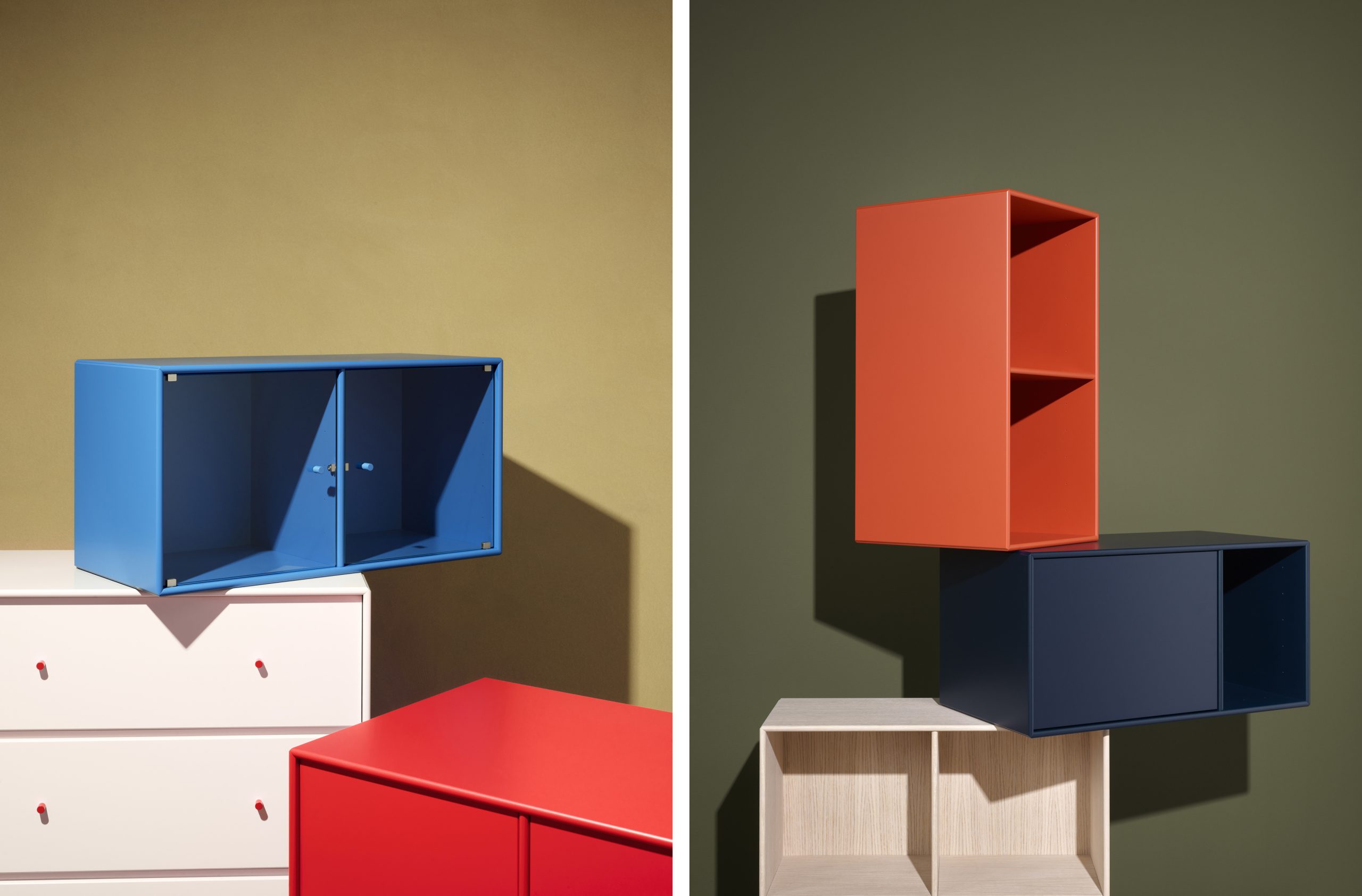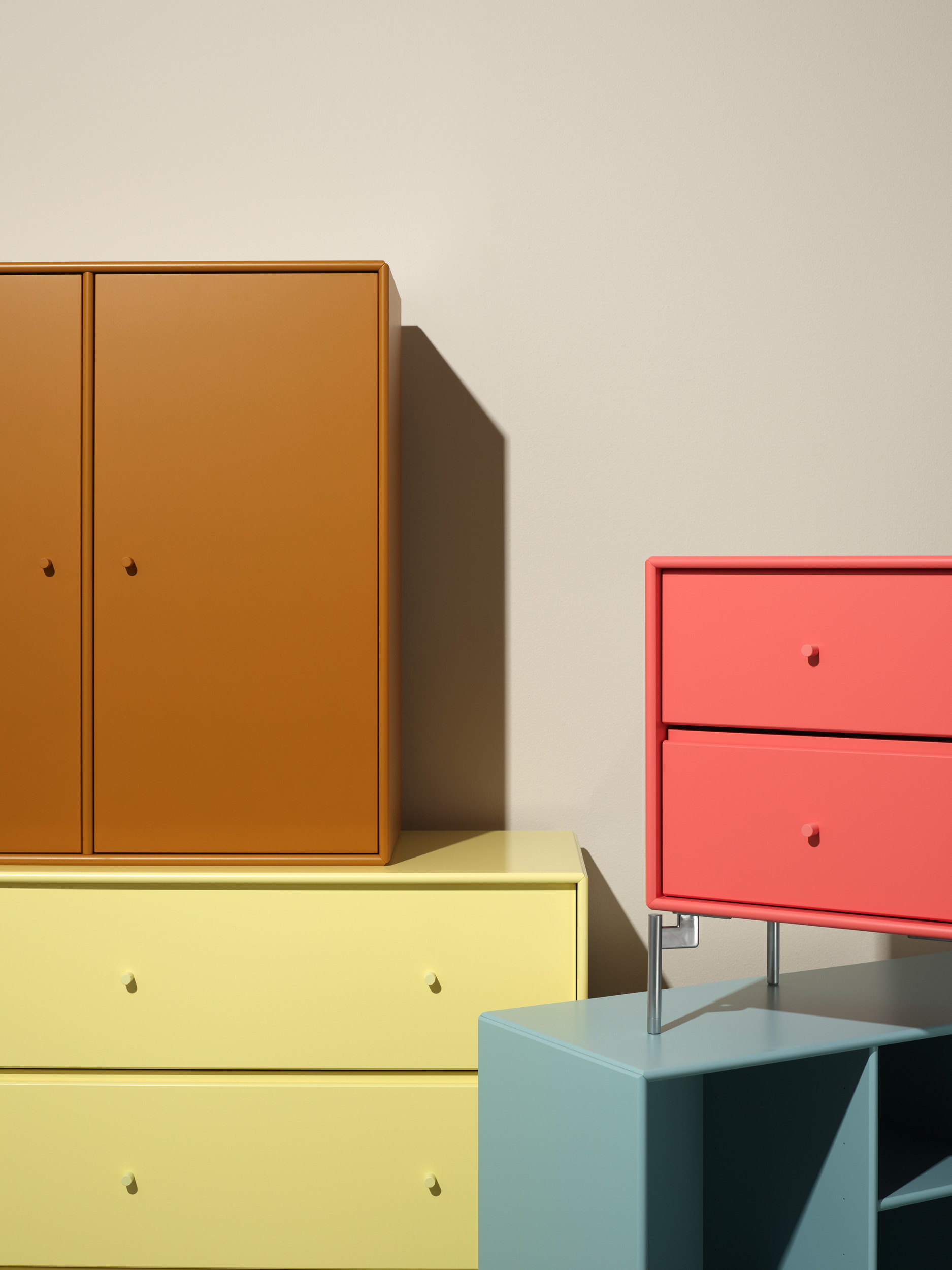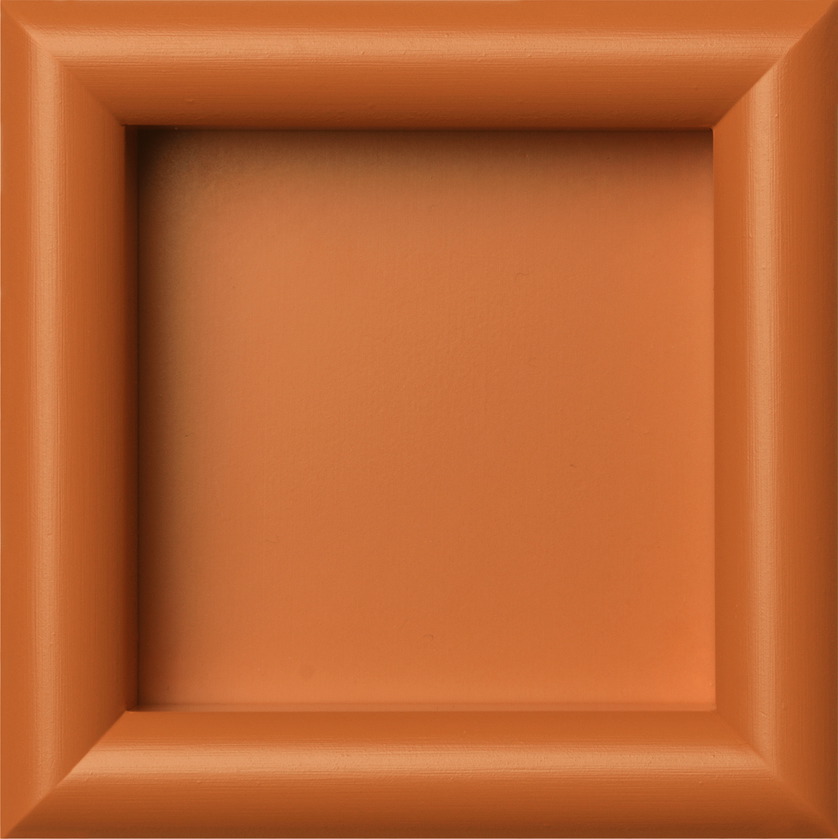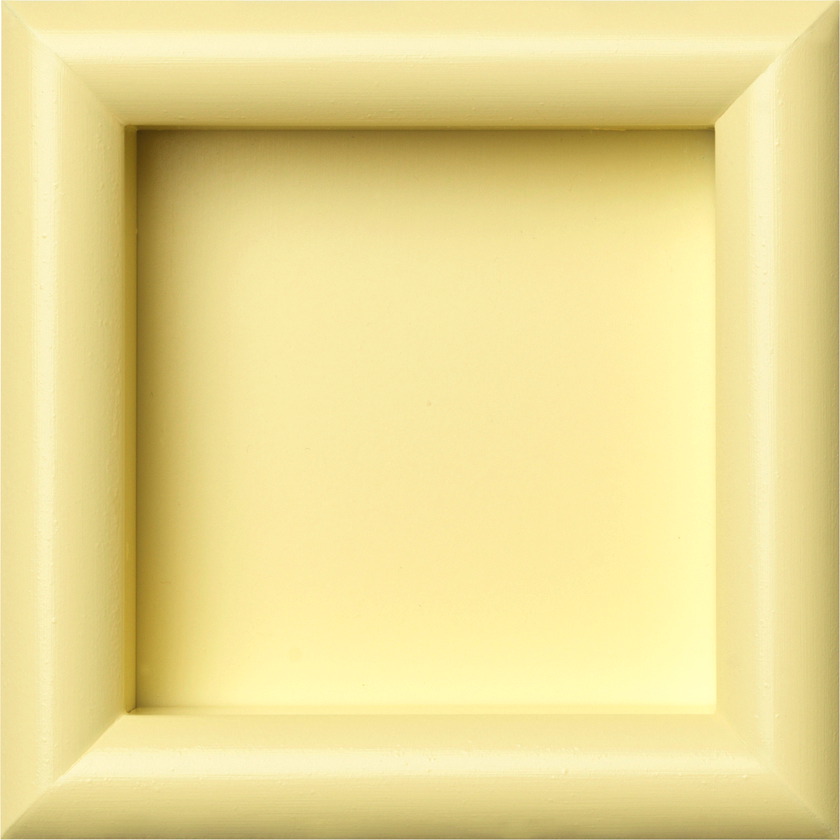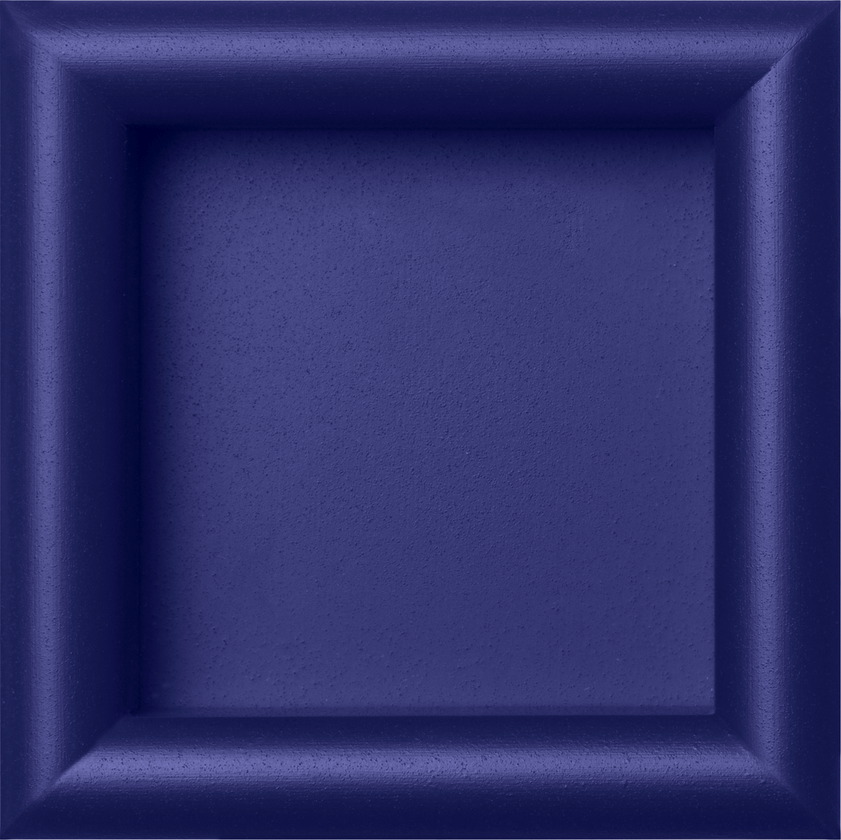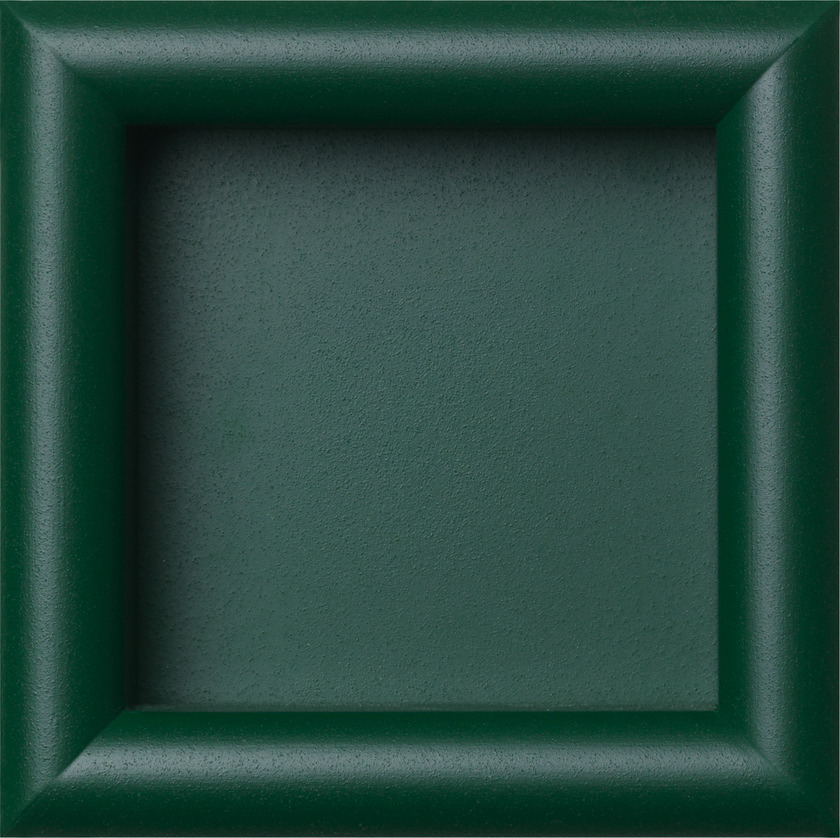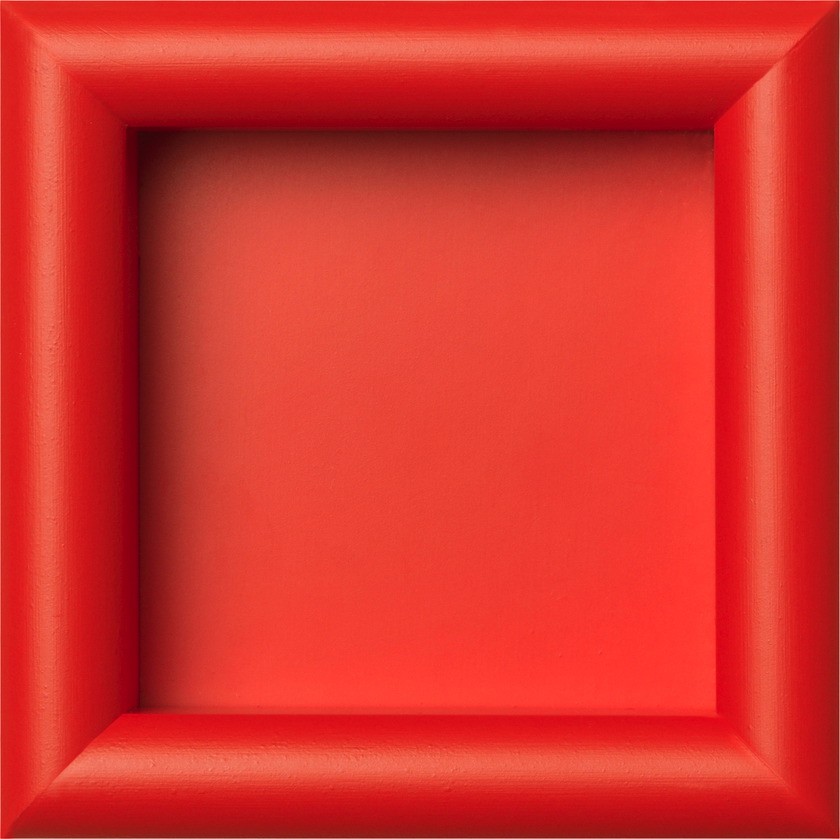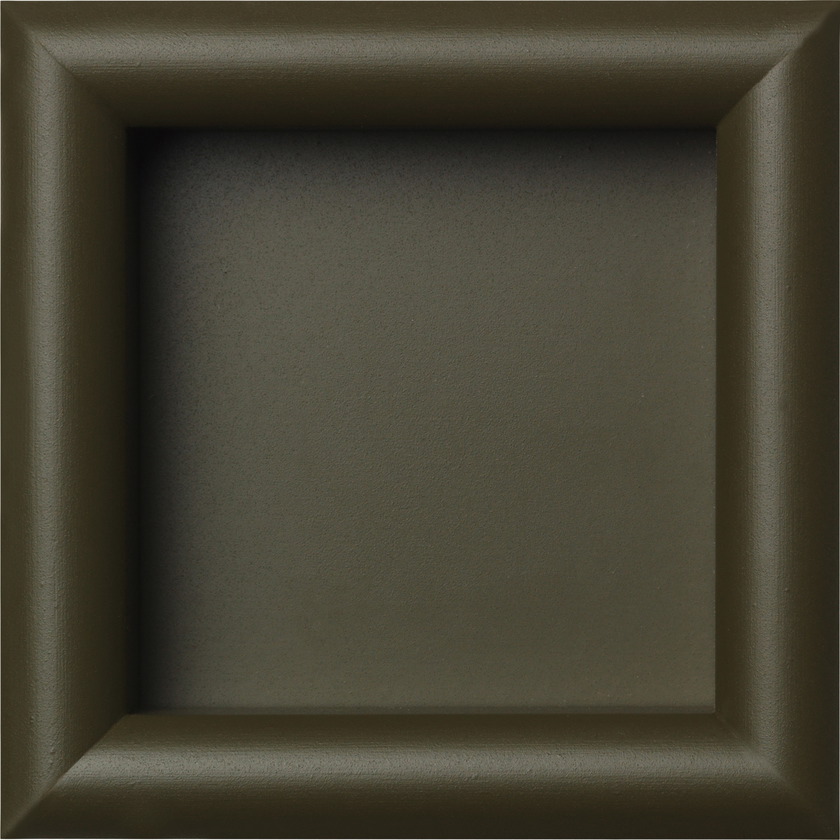Colour Palette for Montana, 2019
MO MON 19
Collection of 30 new industrial varnishes for Montana Furniture. The process of developing the new colour palette for Montana has been rooted in a body-mind philosophy: the belief that our bodies long to be cared for, to be heard, and to have space. The colours should, in every way possible, refer to the body and relate to sensory perception and tactility. The names of the colours all refer to the senses and are easy to remember and pronounce: examples include Truffle, Pomelo, Chamomile, Oyster, Mushroom and Pine.
“It’s important how the colours relate to other senses such as scent, taste and touch. If the colour has a balanced and nourishing expression, if it evokes memories of pleasurable tastes or scents, you are much more prone to surround yourself with it in your home,” explains Margrethe Odgaard.

